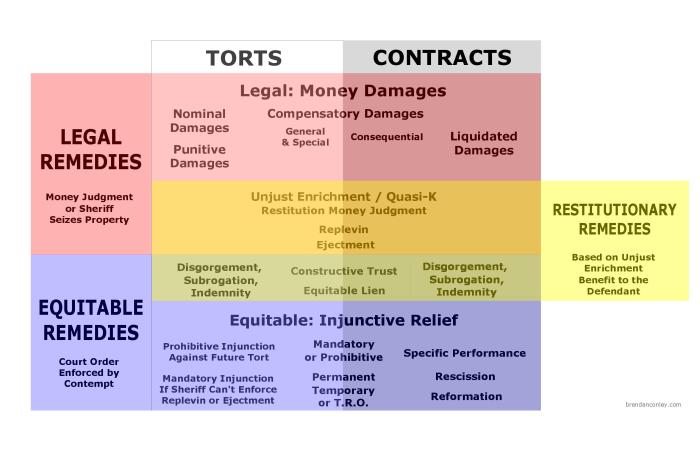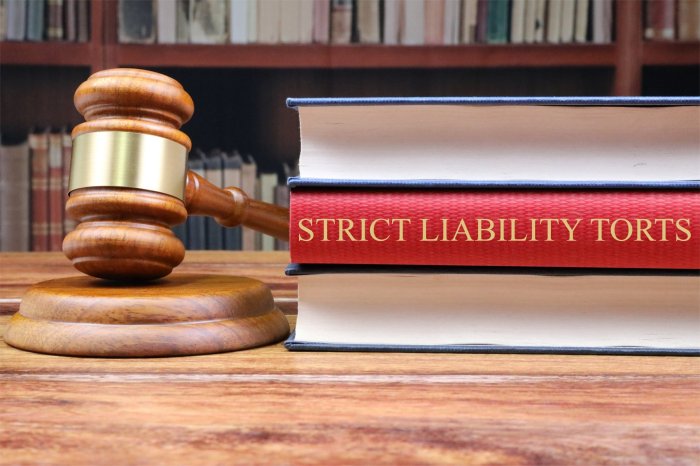Wrongful acts that do not involve contracts present a fascinating and intricate landscape within the legal realm. Distinct from breaches of contractual obligations, these actions encompass a wide spectrum of behaviors that can inflict harm and give rise to legal consequences.
Understanding the nature, elements, and remedies associated with such wrongful acts is essential for navigating the complexities of civil liability.
This comprehensive guide delves into the nuances of wrongful acts that do not involve contracts, examining their intentional, negligent, and strict liability dimensions. We will explore the legal principles and doctrines governing these actions, analyze the available remedies and defenses, and delve into the ethical considerations that shape their treatment within the justice system.
Defining Wrongful Acts Without Contracts

Wrongful acts, also known as torts, are civil wrongs that result in injury or harm to another person or their property. Unlike contractual breaches, wrongful acts do not arise from a breach of a contract but rather from a violation of a legal duty imposed by law.
Common examples of wrongful acts that do not involve contracts include negligence, assault, battery, defamation, and fraud. These acts can cause significant harm to individuals and society as a whole.
The legal principles and doctrines governing wrongful acts are designed to protect individuals from harm and provide remedies for those who have been wronged. These principles include the duty of care, negligence, causation, and damages.
Intentional Wrongful Acts

Intentional wrongful acts are those that are committed with the deliberate intent to cause harm or injury to another person. These acts include fraud, misrepresentation, and defamation.
Fraud involves making false statements or representations with the intent to deceive and cause another person to rely on those statements to their detriment. Misrepresentation occurs when a person makes a false statement or representation that is not necessarily fraudulent but still causes another person to rely on it to their detriment.
Defamation occurs when a person makes a false statement or representation that harms another person’s reputation. Legal remedies for intentional wrongful acts may include compensatory damages, punitive damages, and injunctions.
Negligent Wrongful Acts
Negligent wrongful acts are those that are caused by a person’s failure to exercise reasonable care. Negligence is defined as the failure to act as a reasonably prudent person would under the same circumstances.
Common examples of negligent wrongful acts include car accidents, slip-and-fall accidents, and medical malpractice. Negligence can result in liability for damages, including compensatory damages, punitive damages, and injunctive relief.
Defenses to negligence claims may include contributory negligence, comparative negligence, and assumption of risk.
Strict Liability Wrongful Acts
Strict liability is a legal doctrine that imposes liability on a person regardless of whether they were negligent or intended to cause harm. Strict liability is typically applied in cases where an activity or product is considered to be inherently dangerous.
Common examples of strict liability wrongful acts include product liability, animal attacks, and ultrahazardous activities. Defenses to strict liability claims may include the plaintiff’s assumption of risk, contributory negligence, and the defendant’s lack of knowledge of the dangerous condition.
Remedies for Wrongful Acts: Wrongful Acts That Do Not Involve Contracts

| Remedy | Description |
|---|---|
| Damages | A monetary award to compensate the victim for their losses. |
| Injunctions | A court order that prohibits the defendant from continuing or repeating the wrongful act. |
| Restitution | An order that requires the defendant to return any property or benefits they obtained through the wrongful act. |
The appropriate remedy for a wrongful act will depend on the nature of the harm caused and the circumstances of the case.
Defenses to Wrongful Acts
- Consent
- Self-defense
- Statute of limitations
- Contributory negligence
- Comparative negligence
- Assumption of risk
- Immunity
Each defense has its own specific elements and requirements that must be met in order to be successful.
Comparative Fault and Apportionment of Liability
Comparative fault is a legal doctrine that allows a defendant to reduce their liability for a wrongful act if the plaintiff was also at fault for the harm caused.
There are two main methods used to apportion liability among multiple parties: joint and several liability and proportionate liability. Under joint and several liability, each defendant is liable for the entire amount of damages, regardless of their degree of fault.
Under proportionate liability, each defendant is liable only for the percentage of damages that corresponds to their degree of fault.
Ethical Considerations

Wrongful acts that do not involve contracts can have significant ethical implications. These acts can violate fundamental principles of justice, fairness, and respect for others.
Ethics plays a role in shaping legal doctrines and remedies for wrongful acts. For example, the doctrine of punitive damages is designed to deter wrongful conduct and punish defendants who have acted with malice or recklessness.
FAQ Corner
What is the distinction between a wrongful act and a breach of contract?
A wrongful act, also known as a tort, is a civil wrong that gives rise to legal liability independent of any contractual agreement. In contrast, a breach of contract occurs when one party fails to fulfill their obligations under a valid contract.
Can intentional acts, such as fraud or defamation, constitute wrongful acts even without a contract?
Yes, intentional acts that cause harm to others can be considered wrongful acts, regardless of whether a contract exists between the parties involved.
What is the concept of strict liability in the context of wrongful acts?
Strict liability imposes liability on a person or organization regardless of fault or intent. It is typically applied in cases where an activity or product poses a high risk of harm, such as the manufacture or sale of defective products.